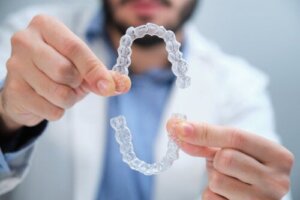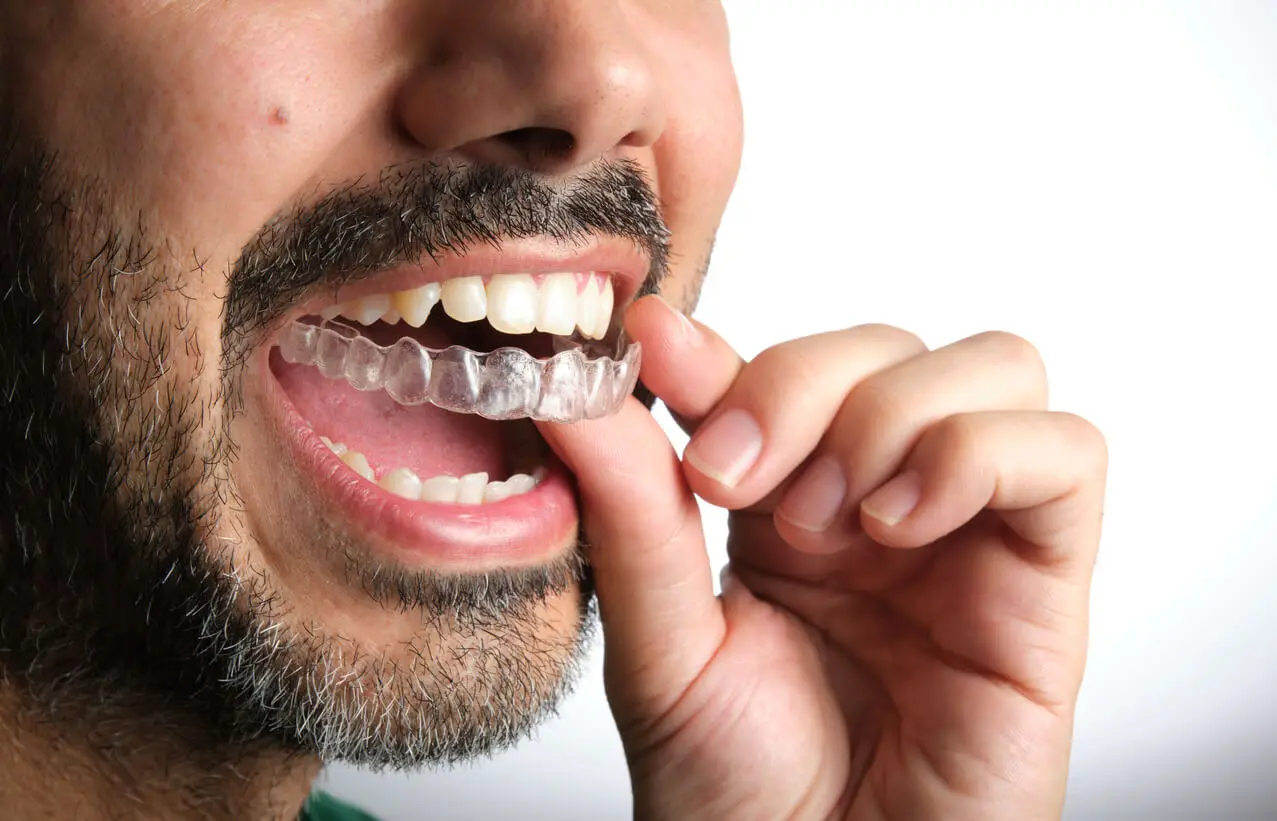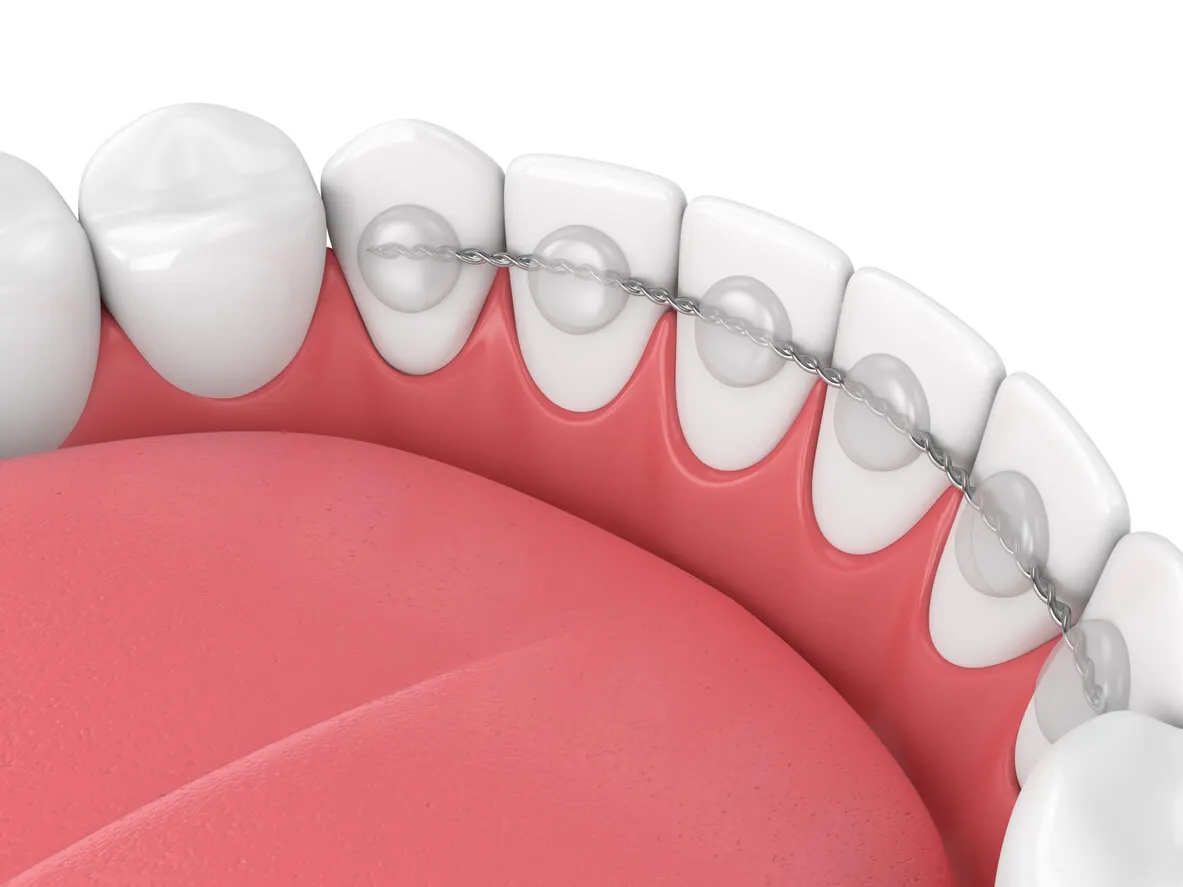Dental Retainers: Types and Benefits


Written and verified by the doctor Leonardo Biolatto
When finishing orthodontic treatment, it’s essential for patients to look after the work that’s been done with the help of dental retainers. These appliances play a crucial role, as they prevent teeth from returning to their original position over time.
The so-called “retention period” is the last part of any orthodontic process and taking it seriously is key to preventing teeth from becoming naturally crooked again. Fortunately, there are several types of retainers available today, which are imperceptible and allow us to keep our teeth and bite healthy.
What is the function of dental retainers?
The main function of this appliance is to maintain the correct position of the teeth after treatment with braces or invisible aligners. Acquiring quality dental retainers is vital, as they must be used for the time required by your dentist. This is also to prevent tooth loss and improve malocclusion problems.
According to research led by the Department of Interdisciplinary Dentistry at the Medical University of Pomerania, Poland, the stability of tooth position after orthodontic treatment depends on multiple factors, from personal habits to proper bonding. Therefore, no retainer can guarantee perfect tooth alignment.
However, the use of dental retainers is mandatory if orthodontic results are to be preserved for a longer period of time. That’s why most dentists recommend wearing them during the first year after treatment. After that period, it’s advisable to continue using them, but less frequently.
What types of dental retainers are there?
Currently, dentists offer their patients two types of retainers according to their preferences and lifestyle: removable retainers and fixed retainers. Each option provides important benefits and their constant use helps prevent teeth from moving and, if they do move, it should be a minimal and imperceptible change. These are their characteristics.
1. Removable retainers

This is a small appliance that adapts perfectly to the patient’s teeth and, thanks to its unique shape, ensures the teeth stay in place. It’s usually the most classic option for orthodontic care, as it’s very easy to put in or take out depending on the needs (eating, talking, brushing teeth, flossing, etc.).
Within this category, there are two types of retainers. The first is the Hawley-type retainer, which consists of a metal wire attached to an acrylic arch that hugs the teeth and is visibly noticeable when smiling. According to some studies, its failure rates are usually very low, but it’s an appliance that can cause aesthetic embarrassment and discomfort when speaking.
For their part, patients can also resort to vacuum-formed retainers, also popularly known as Essix. This is a PVC wrap-around dental splint that covers the denture and doesn’t affect the appearance as much as the Hawley. However, despite being an economical option, they can break and scratch more easily.
2. Fixed retainers

Unlike removable retainers that can be taken out and put in at the patients’ convenience, fixed retainers are non-removable and are bonded to the teeth through braces and adhesives. It’s a custom-made metallic retainer, imperceptible when speaking or breathing, and which you can eat with without any problem.
In addition, it requires minimal maintenance if it’s installed in a certified dental center. You only need to brush your teeth at least twice a day and floss after every meal. Because it’s an appliance that’s worn for several years at a time, oral hygiene is essential to prevent tartar buildup.
Benefits of fixed dental retainers
The use of retainers is essential to maintain the correct position of the teeth. Their constant use is the only way to guarantee aligned teeth without any deviation. For this reason, if you don’t want to have to put on and take out a removable retainer every day, it’s better to opt for a fixed retainer and prevent the teeth from returning to their original position.
These are the main advantages of using fixed dental retainers:
- They preserve dental harmony. Undoubtedly, the greatest benefit of retainers is to be able to maintain the effort invested during orthodontics for a long time, and enjoy great-looking teeth.
- They’re good value for money. Although it’s true that removable retainers can be more economical, they’re also of lower quality and need to be replaced regularly. Purchasing a fixed retainer is an investment for the future.
- They’re comfortable appliances. In terms of imperceptibility and comfort, fixed retainers don’t irritate the gums, cheeks, or palate. After two days of use, you’ll only feel them when you touch them with your tongue.
- They help you to smile without fear. Fixed retainers are perfect for adults and teenagers who want to laugh without fear and enjoy the freedom to show their teeth. This is because, being custom-made, they’re very discreet and invisible.
- They’re easy to clean. In order to prevent the accumulation of tartar and plaque, it’s essential to follow a daily dental hygiene routine to ensure the durability of the retainers. In addition, you should visit your dentist for general check-ups.
After orthodontics, dental retainers are the best allies
Now that you know what dental retainers are, what types exist and what their main benefits are, it’s time to start thinking about which one you’d like to use when you finish your orthodontics treatment. Remember that, no matter which model you choose, it’s best to go to a professional center where they take care of your health and you can have the smile you always dreamed of.
All cited sources were thoroughly reviewed by our team to ensure their quality, reliability, currency, and validity. The bibliography of this article was considered reliable and of academic or scientific accuracy.
- Jedliński M, Grocholewicz K, Mazur M, Janiszewska-Olszowska J. (2021). What causes failure of fixed orthodontic retention? – systematic review and meta-analysis of clinical studies. Head Face Med. 2021 Jul 24;17(1):32. doi: 10.1186/s13005-021-00281-3. PMID: 34301280; PMCID: PMC8306281.
- Kalha AS. (2016). Orthodontic retention to have and to hold. Evid Based Dent. 2016 Dec;17(4):105-106. doi: 10.1038/sj.ebd.6401200. PMID: 27980334.
- Madurantakam P, Kumar S. (2017). Fixed and removable orthodontic retainers and periodontal health. Evid Based Dent. 2017 Dec 22;18(4):103-104. doi: 10.1038/sj.ebd.6401267. PMID: 29269822.
This text is provided for informational purposes only and does not replace consultation with a professional. If in doubt, consult your specialist.








